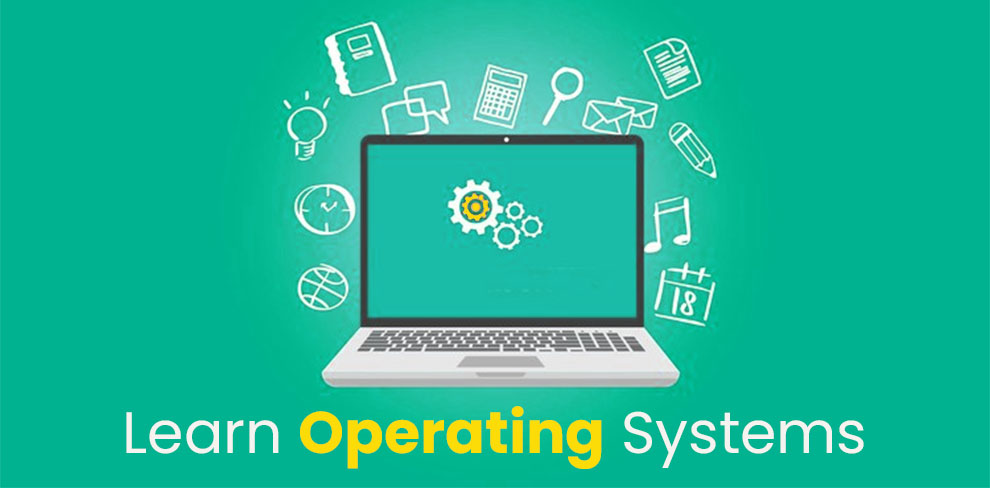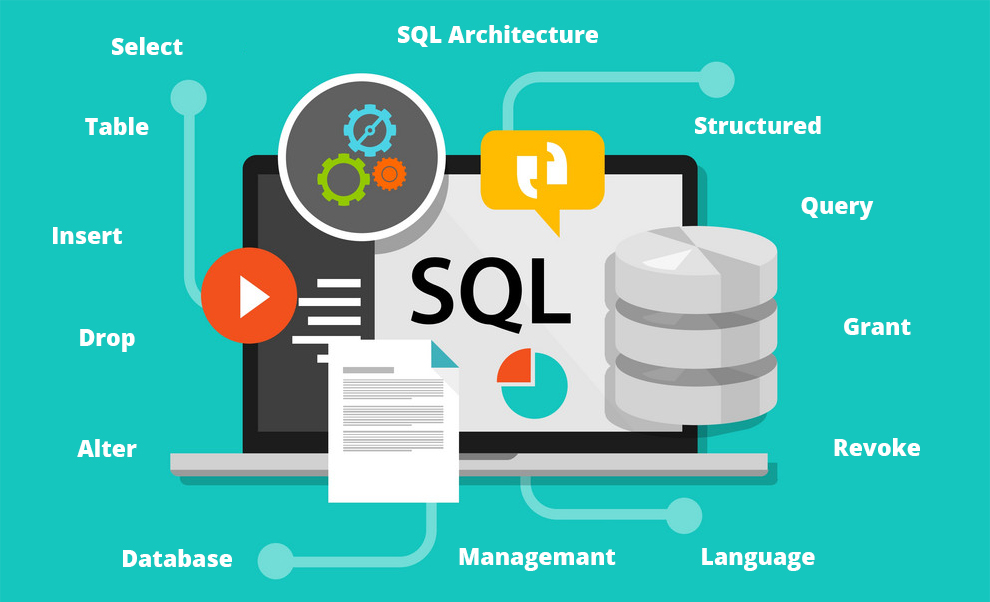If you are a learner wondering how to learn Operating System concepts properly, then you have landed on the appropriate article. This article will accurately state and describe the steps you need to take to learn Operating Systems proficiently.
Skip To
- What Is An Operating System?
- What Does An Operating System Do?
- Prerequisites To Learning About Operating Systems
- How To Learn About Operating Systems as Beginners?
- Types of Operating System
- Tips on Operating System Development
- Conclusion
What Is An Operating System?
An Operating System (commonly abbreviated as ‘OS’) is a software that is loaded into your personal computers to support all other functions of the device like storing files, managing security and so on.
Operating systems are a necessity without which any computer, mobile or tablet wouldn’t work. It is the first thing that has to be installed into the hardware in order to make the hardware functional.
Today there are several operating systems for the computer like Windows, macOS, and Linux. Mobile phones also have operating systems like Android and iOS.
There are mainly five types of operating systems: Batch Operating Systems, Distributed Operating Systems, Time-Sharing Operating Systems, Embedded Operating Systems and Real-Time Operating systems.
This article will talk about operating systems in detail while providing you with a guide on the best way to learn Operating Systems.
Towards the end of the article, we even give you a skeleton instruction set on how to build one of your own!
What Does An Operating System Do?
To know how to learn Operating Systems, we must be aware of their primary functions.
An Operating System is the interface between the user of the computer and the hardware that manages all other computer software.
Its tasks involve input and output handling, memory management, file storage, computational operations and making sure all the necessary parts of the desktop can reach the Central Processing Unit for instructions at the same time.
Do you wish to know learn about operating systems in detail? Keep on reading this article to find out.
Prerequisites To Learning About Operating Systems
Before we answer the question on learning about Operating Systems, some essential prerequisites are:
- Basics of computer architecture
- Awareness of hardware design
- Computer organization and knowledge of computer peripherals like storage devices and how to access them.
- Difference between RAM and ROM, Storing memory and so on.
How To Learn Computer Operating Systems as Beginners?
Following are the guidelines on the best way to learn Operating Systems:
- Start small with online short video lessons & tutorials: To know how to learn about Operating Systems, you can hop on to a website or go to YouTube to watch small tutorials that define OS properly and comprehensively explain its functions and applications.
These tutorials also explain some of the theoretical terms in detail and are not time-consuming or difficult to understand. They have been made for newbies to develop an understanding of the features of the Operating System.
One can familiarize themselves with the Operating System interface of their choice through these video tutorials.
- Buy a good book on your preferred OS: One of the primary steps you can take to learn about a particular Operating System is to read up about it.
- You can purchase a good beginner-level OS textbook that helps you understand how to learn computer operating systems and builds a solid understanding of the logic and theory behind the OS.
Books are a beneficial purchase because not only do they teach you the topics in great detail, but you can also refer to them in the future for a quick revision in case you forget some of the concepts.
You can also choose to read about Operating Systems from articles that are available on the internet or simply from Wikipedia.
- Take an online course: Even after taking online tutorials and reading books, students are still unsure how to learn about operating systems in depth.
Well, we suggest you take up an online course on OS. They give you the best exposure on how to learn operating system concepts and apply them practically.
Choose any Ed-Tech platform like Udemy, Coursera, Udacity, or edX to know more about Operating Systems in-depth.
You can finally apply what you have learned so far in real life through tasks given in the courses. These courses take time to complete, and they tend to test your knowledge along the way.
- Go to the OS’s official site and learn: The official websites of the Operating Systems have video tutorials and step-by-step guides to help users navigate around the UI of their Operating System Software.
These tutorials are graphic and come with the latest updated features. If you are learning about an OS for the first time, then learning from the respective website would be the best way to learn Operating Systems.
- Use the OS and get accustomed to it: The next and final step in your journey of figuring out how to learn Operating System concepts properly is to install it on your Personal Computer and practice along.
This will give you practical hands-on experience, and you will also get accustomed to the Operating System. Keep regularly practicing to operate and work around an OS of your choice smoothly.
Follow these detailed steps to understand how to learn about Operating Systems successfully.
Types of Operating System
There are primarily 5 types of Operating Systems –
1. Batch Operating Systems: In this type of Operating System, the similar tasks to be completed are grouped together into units called batches with the help of an operator. These batches are then executed one by one.
This system saves a lot of time by performing several similar tasks at once without reloading the system each time. This particular kind of operating system can be shared among several users.
However, the user needs to manually intervene between every other batch to continue the execution process. Not much of the CPU is utilized due to the amount of time taken for loading and unloading being much higher than the program execution.
Knowing about the batch processing system is crucial to understanding how to learn Operating Systems.
2. Time Sharing Operating Systems: In Time Sharing Operating Systems, the time is shared between two or more tasks, which implies several processes are being executed simultaneously with the aid of the Time-Sharing concept.
In this concept, a time called quantum time is decided upon to execute the processes. The process can continue only until that specific period, after which other processes will start to run. In the next cycle, the first process will begin again with the same time allotted.
The CPU will be fully utilized, and each process will get an equal chance to execute. However, this process is disadvantageous when a particular process has a higher priority. Therefore, the higher priority process shall not be executed first in this type of system.
3. Embedded Operating Systems: Embedded Operating systems are not designed for computers. They are designed for electronic devices and perform only specific tasks like central heating systems or GPS trackers.
These operating systems are dedicated to only one kind of task and therefore are super fast, consume less memory and resources, and are cost-efficient.
However, the limitations are that it can perform only one task and it is not easy to update/upgrade these types of operating systems.
4. Distributed Operating Systems: To fully understand how to learn Operating Systems, you need to know about Distributed Operating Systems.
In a Distributed Operating System, several different systems have their own resources like primary and secondary memory and processing units.
These systems are connected to each other through a shared communication network and have access to each other’s data as well. One system can perform its own task without being burdened by other tasks.
In this process, some hindrance in any one of the processes will not affect the other processes, and the load is evenly distributed on the computer, increasing its efficiency.
However, in order to make the data secure, extra measures will be needed, and the communication network needs to be stable at all points of time.
5. Real-Time Operating Systems: In Real-time Operating Systems, the execution of data is performed in real-time; that is, the program is executed as soon as it comes without any sort of delay.
It is basically the same as the time-sharing OS with the concept of clock interrupt. So to process a large amount of data, the fastest way out is to use a real-time operating system.
In this type of system, the devices and resources are utilized to their maximum capacity, and the chance of an error occurring is almost negligible, but the time-complexity of the Real-Time OS algorithm is greater than any other OS algorithm.
Real-time Operating systems are further divided into:
- Hard Real-time
- Soft Real-time
If you want to know the right way on how to learn about Operating Systems, you need to make sure you understand the types of Operating Systems well.
Tips to Develop an Operating System
Now that you know how to learn Operating Systems, let’s look at the steps to develop an OS:
Follow these steps and research them in detail to be able to build an operating system of your own from scratch.
Step 1: It is very important that you have a very strong computer science background if you want to develop an Operating System. You need to have competitive-level knowledge of Data Structures, Algorithms, memory management, network security and resource management.
Step 2: You need to be well versed with programming languages like Python, Ruby, Java, JavaScript, HTML and their likes in order to develop a fully functioning Operating system software.
It is mandatory to learn how to code in C and C++ if you aim to build an OS.
Step 3: Watch tutorials and take online courses on how to build an Operating System. These courses will strengthen your knowledge and give you the primary idea of how to go about developing an OS on your own.
Step 4: Learn an Assembly Level Language. Assembly Level Languages bridge the gap between the software and hardware by communicating with the processors, so to connect your OS to the hardware, you need to learn an Assembly Level Language.
Step 5: Conduct thorough research on the type of processor you want to install in your Operating System. For example, x86, Intel processors and so on.
Steps 6: You now need to select a development environment for building your operating system. These will be the places where you will code your operating system. Common examples of development environments are Windows and Unix.
Step 7: Research about bootloaders, kernels and control systems that you want to use for your operating system. These are important aspects of an operating system that help it function properly and also help you to code your OS in the development stages.
Step 8: Join a community of OS builders for support, advice and doubt clearing.
Step 9: Test your new operating system on a virtual machine and get ready for release!
EndNote
This article has provided you with all the necessary details that you might find useful while learning an Operating System. The best way to learn operating systems has been stated above in the most comprehensive manner.
We hope this article helps you in your journey of exploring Operating Systems and helps you to answer the question ‘how to learn computer operating systems?’ correctly and concisely.




